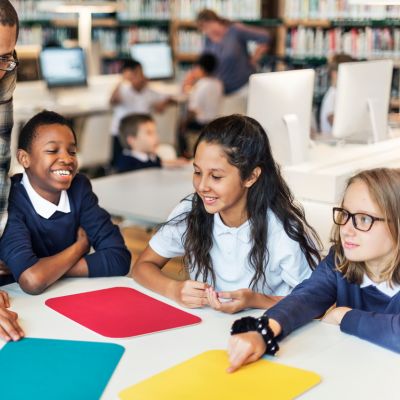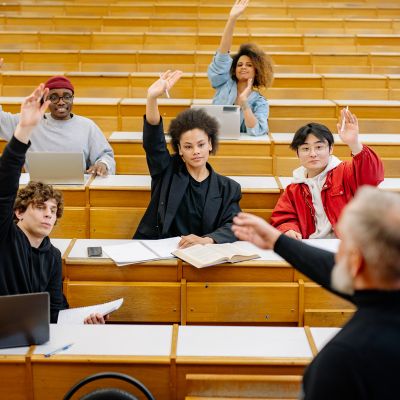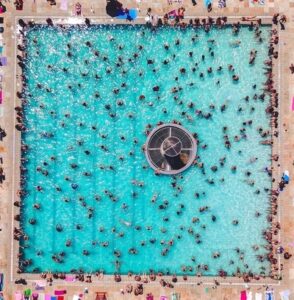 As every new academic year approaches, it’s important to prioritize your child’s eye health. This helps to ensure they have a successful and comfortable learning experience. In this blog, we’ll explore essential tips to safeguard your little one’s vision throughout the school year.
As every new academic year approaches, it’s important to prioritize your child’s eye health. This helps to ensure they have a successful and comfortable learning experience. In this blog, we’ll explore essential tips to safeguard your little one’s vision throughout the school year.
Back-to-school basics for your child’s eye and vision health include:
- Getting regular eye exams
- Watching for warning signs
- Wearing eyeglasses and contact lenses
- Using proper lighting
- Wearing protective sports eyewear
- Reducing screen time
- Practicing the 20-20-20 rule
- Wearing sunglasses outdoors
- Staying hydrated
Back to School Basics for Your Child’s Eye and Vision Health
1. Get Regular Eye Exams
Regular eye exams are essential for kids going back to school. This is because they detect vision problems early on which helps prevent learning difficulties. Clear vision ensures they can excel in the classroom by:
- Reading
- Concentrating
- Participating
Undiagnosed issues may lead to academic setbacks and affect overall development. Early detection allows for timely treatment to optimize their learning experience for academic success.
2. Watch for Warning Signs
Regular eye exams are only part of catching children’s vision problems. It’s also important to keep a lookout for issues at home. By knowing what to look for, you can spot vision problems so your child gets the help they need.
Squinting is one of the most common signs of vision problems. You may also notice your child frequently rubbing their eyes or holding objects abnormally close in order to see. Complaints of headaches and eye pain are another key indicator that your child is straining their eyes. This may be accompanied by red or watery eyes.
Learn 5 signs that your child needs an eye exam.
3. Wear Eyeglasses & Contact Lenses
Eyeglasses and contact lenses aid children in school by correcting vision problems such as nearsightedness or farsightedness. Refractive errors like these along with astigmatism lower their ability to see clearly.
Improved vision with glasses and contacts enables them to:
- Read from the board
- Focus on textbooks
- Engage better in classroom activities.
This leads to increased academic performance, better concentration, and overall learning success. Updating your child’s eyewear prescription ensures they can actively participate in class and reach their full potential.
Learn about our lens and frame selection in Knoxville, TN.
4. Use Proper Lighting
Proper lighting is crucial for children’s learning and well-being. Sufficient and well-designed lighting:
- Enhances visibility
- Reduces eye strain
- Improves focus
All of this aids concentration and information retention. Adequate natural light promotes a positive learning environment and regulates circadian rhythms, leading to better sleep patterns.
Additionally, appropriate lighting may help reduce the risk of:
- Headaches
- Fatigue
- Depression and mood disorders
Overall, optimal lighting conditions positively impact children’s academic performance, mood, and overall learning experience.
5. Wear Protective Sports Eyewear
Protective sports eyewear helps children in school by reducing the risk of eye injuries during physical activities and sports. They provide essential protection against potential impacts from:
- Balls
- Elbows
- Other hazardous objects
This safeguards their vision and overall eye health. With protective eyewear, children can enjoy an active and healthy lifestyle without compromising their studies due to potential injuries.
Learn 5 best practices for sports eye safety.
6. Reduce Screen Time
It’s important to reduce screen time for kids returning to school. Doing so:
- Promotes better physical health
- Enhances focus
- Improves social interactions
Excessive screen use can lead to:
- Sedentary habits
- Eye strain
- Disrupted sleep
This can have a major effect on their academic performance over time. Limiting screen time allows children to:
- Engage in outdoor activities
- Concentrate on learning
- Build meaningful relationships with peers
These factors along with others can contribute to overall well-being and academic success.
7. Practice the 20-20-20 Rule
Practicing the 20-20-20 rule can be vital for protecting kids’ eye health when they return to school. Spending extended time looking at screens can stress their eyes and lead to digital eye strain.
The rule suggests:
- Taking a 20-second break
- Every 20 minutes
- To focus on something 20 feet away.
This helps alleviate eye fatigue and reduces the risk of developing nearsightedness. It also promotes better visual well-being during their studies.
Learn more about computer vision syndrome.
8. Wear Sunglasses Outdoors
Wearing sunglasses outdoors is crucial for kids going back to school as it safeguards their developing eyes from harmful ultraviolet (UV) rays. Children’s eyes are more susceptible to UV damage than adults, making protection vital during outdoor activities. Prolonged UV exposure can increase the risk of eye conditions like cataracts and macular degeneration later in life.
Sunglasses with UV protection shield their eyes from these harmful rays, preventing potential long-term issues. Additionally, sunglasses:
- Reduce glare
- Improve visual clarity
- Minimize eye strain,
This helps to enhance their overall comfort and focus during school hours. By instilling the habit of wearing sunglasses early on, we help establish a foundation for a lifetime of good eye health.
Learn how UV rays can be a year-round threat due to snow blindness.
9. Stay Hydrated
Staying hydrated ensures proper lubrication of the eyes. When adequately hydrated, the eyes stay moist, reducing the risk of:
- Dryness
- Irritation
- Discomfort
Proper hydration also supports tear production, which helps protect the eyes from irritants and infections. Well-hydrated kids are less likely to experience eye strain and fatigue, especially when using digital devices for extended periods. This promotes better visual performance in schoolwork and other activities. Drinking enough water daily contributes to maintaining optimal eye health and visual acuity, supporting their overall well-being as they grow and learn.
Does your child need a back-to-school eye exam? Contact us today to schedule your appointment!
Regular eye exams detect vision problems early and prevent learning difficulties. Warning signs to look out for include squinting, headaches, and red eyes. Eyeglasses and contact lenses can correct vision problems and improve academic performance. Proper lighting reduces eye strain and enhances focus, while protective sports eyewear prevents injuries during physical activities.
Limiting screen time, practicing the 20-20-20 rule, and wearing sunglasses outdoors protect children’s eye health. Staying hydrated ensures proper lubrication and reduces dryness, discomfort, and eye strain, supporting overall well-being and academic success.
Hardin Valley Eyecare & Optical has been serving Knoxville since 2009. Located at 10904 Spring Bluff Way, you can schedule an appointment online or give us a call at (865) 888-0892.






